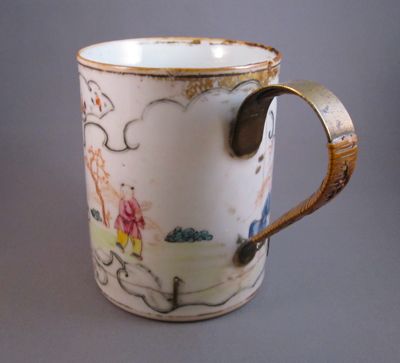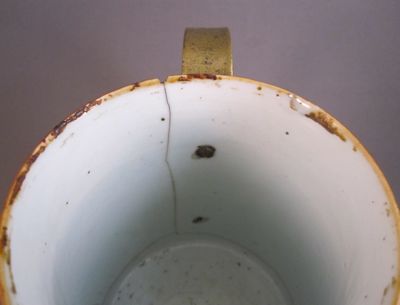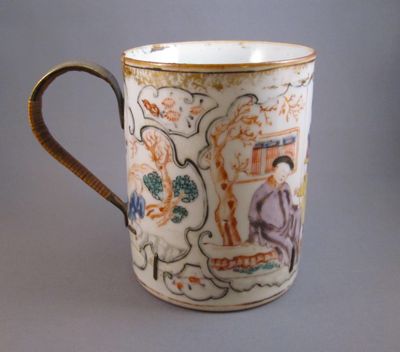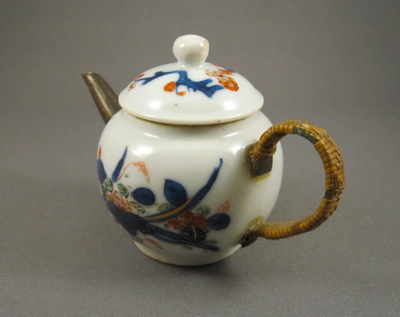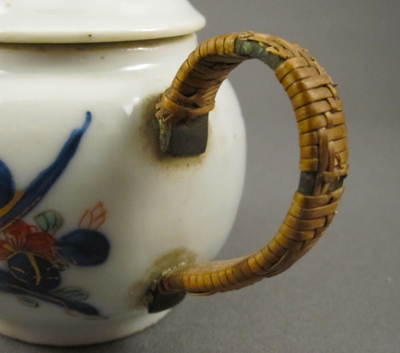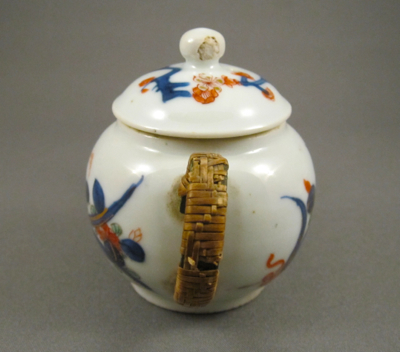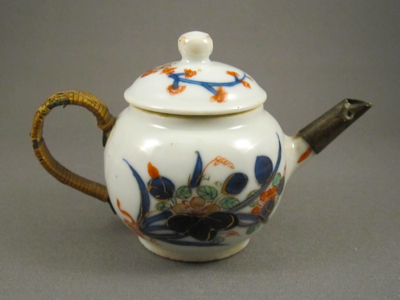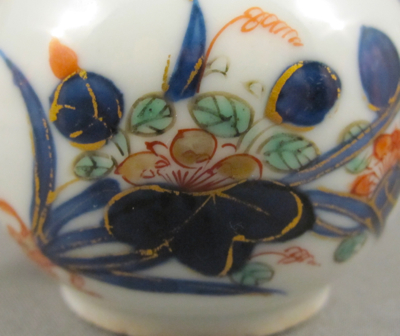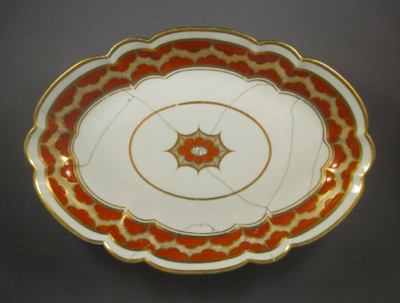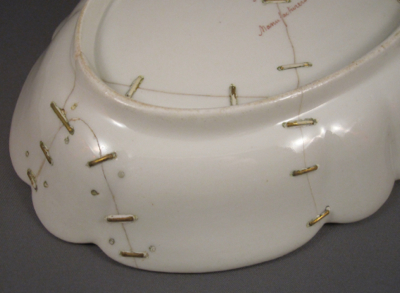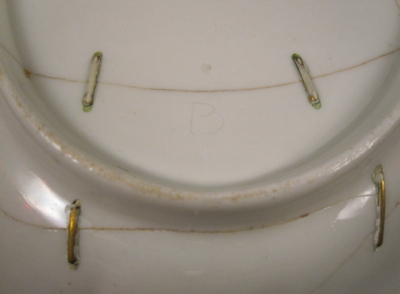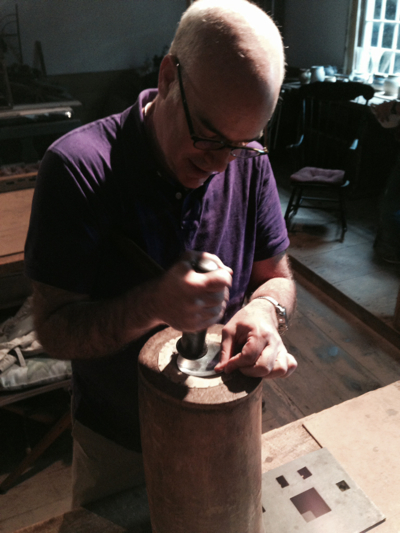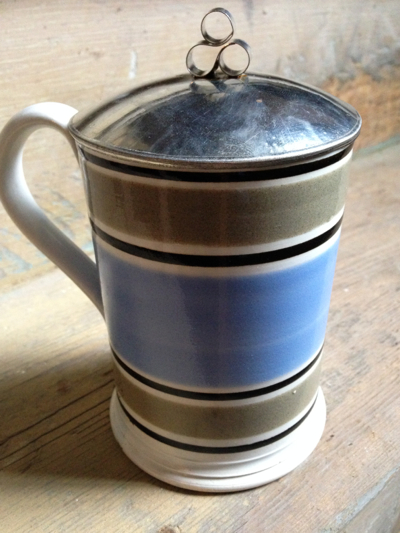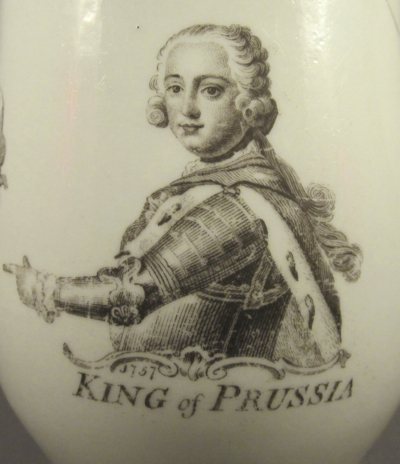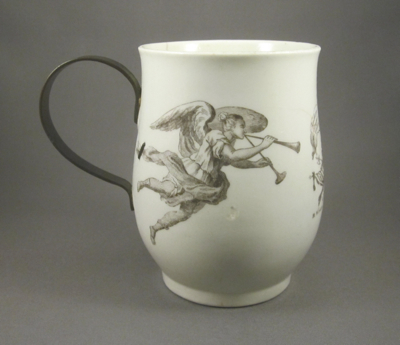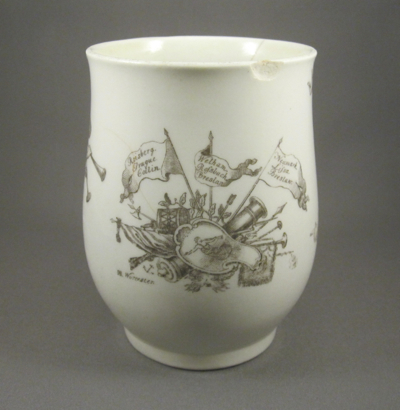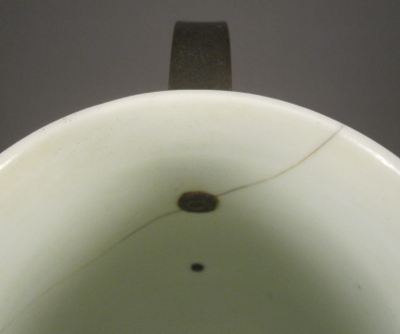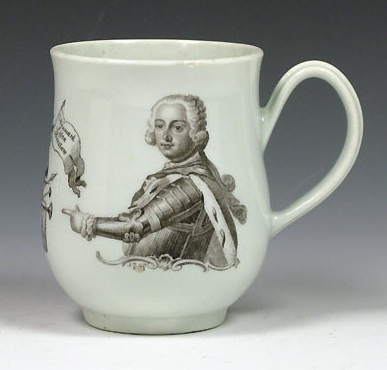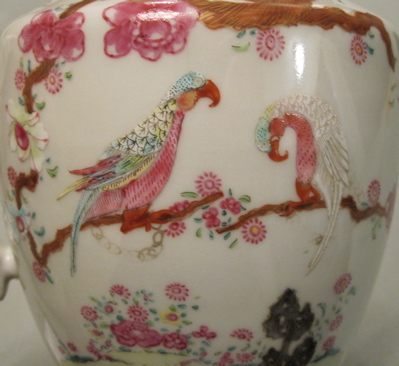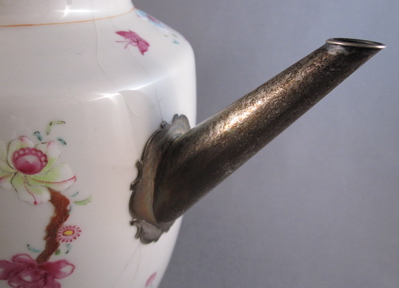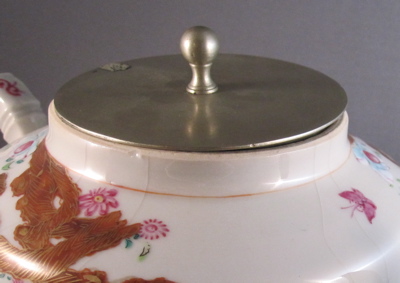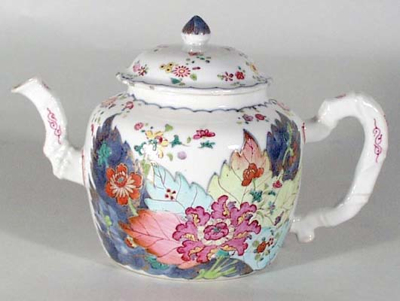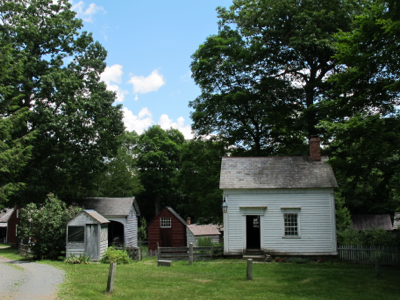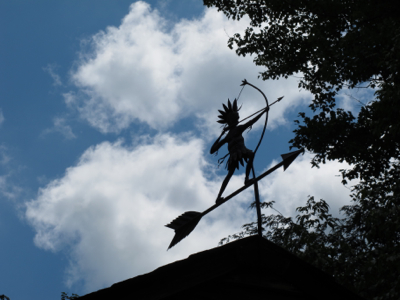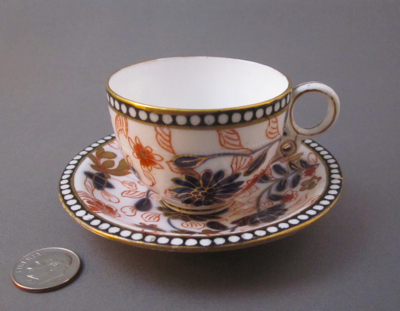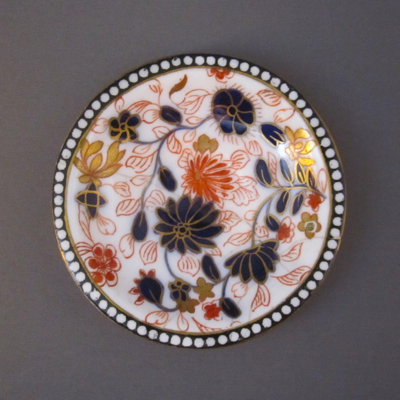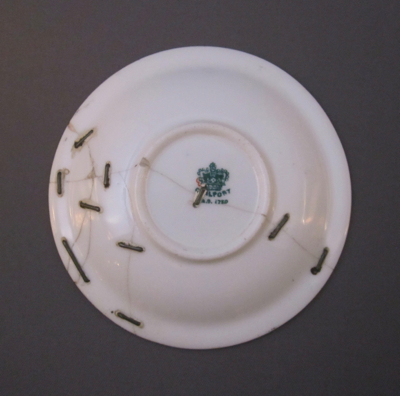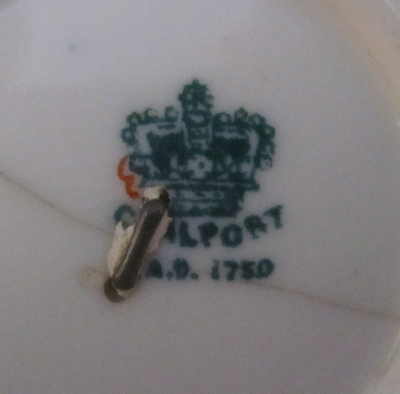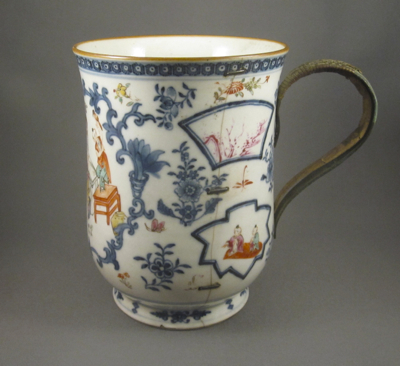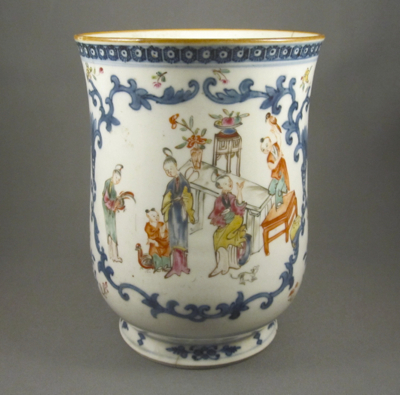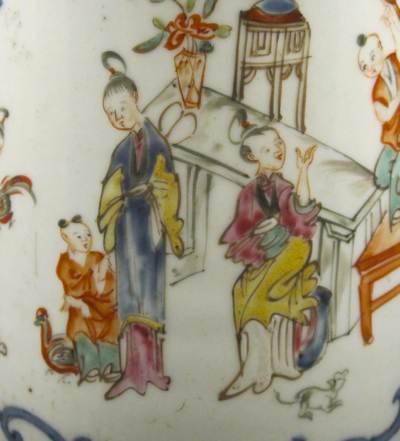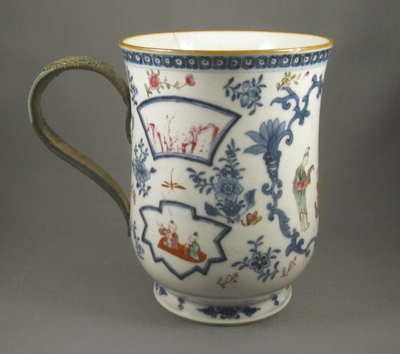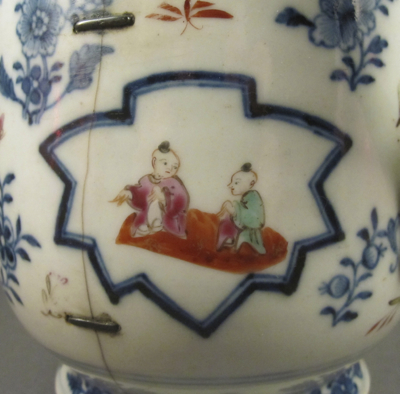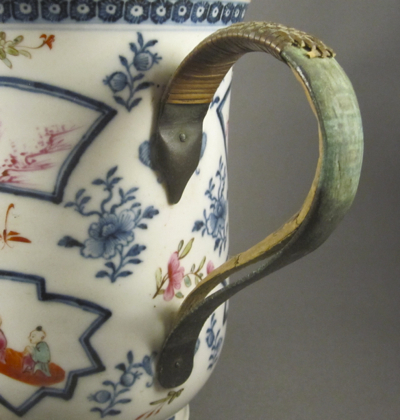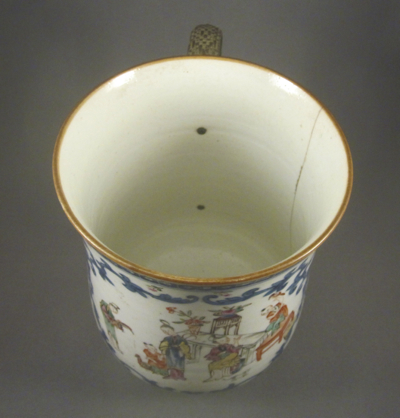In honor of Independence Day I am pleased to share with you a Chinese porcelain mug with a fireworks theme, made for export to North America and Europe during the Qianlong period (1736-1795). It stands 4-3/4″ high and is decorated in the Mandarin style with cloud-shaped cartouches executed in famille rose enamels, and containing floral sprigs and a family tableau depicting a child lighting fireworks.
I wouldn’t be surprised if during the first organized 4th of July celebration in 1777, a raucous party involving the lighting of fireworks forced this mug to fly off a table and crash to the ground, causing its handle to shatter and the bottom to fall off. Rather than throw out the expensive and cherished mug, it was brought to a local tinker who fashioned a sturdy brass replacement handle. To help insulate the handle from its hot contents, it was wrapped in decoratively woven rattan. The bottom was reattached to the body using five large brass staples with a bond so tight it could hold liquid without leaking. As china menders typically did not sign their work, there is no way to know who was responsible for this repair, but I imagine they each had their own signature style in weaving the rattan so that they could distinguish their work from each other.
These mugs of similar form show what the original handle on my mug might have looked like.
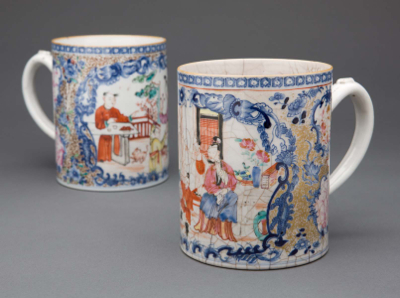
Photo courtesy of Mount Vernon’s Mystery Midden


